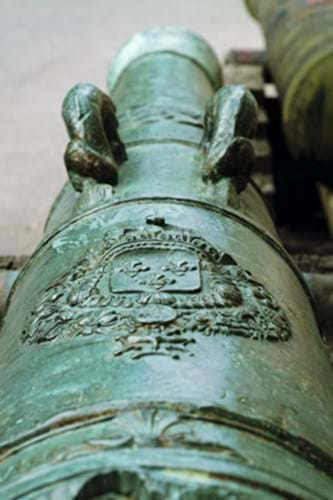
The reason? It was one of four ships whose loss marked one of the worst disasters in British Naval history, highlighting the inadequacies of navigational techniques and instruments. The tragedy ultimately led to the instigation of the Longitude Prize by Act of Parliament in 1714.
The Association was the flagship of Admiral Sir Cloudesley Shovell, under whose command the British fleet blockaded the French Fleet in 1707.
The return journey to England was dogged by poor weather conditions, including fog, which made navigation extremely difficult. Consequently, by the time the navigators of the fleet thought they were entering the safety of the English Channel, at the latitude of Ushant, they were approximately 100 miles off-course heading for the perilous rocks and reefs off the Isles of Scilly.
Accounts suggest that an ordinary seaman who had been keeping his own reckoning of their position approached the admiral to voice his concern for the safety of the fleet. As such actions were viewed as mutinous, Shovell had him hanged on the spot.
It proved a fatal error for Shovell himself, whose body, along with those of his stepsons, his flag captain Loades and his pet greyhound, were found on the beach several miles away from the inevitable wreck after the ship struck the Gilstone Ledges off the south west tip of the Scillies on the evening of October 22.
It wasn't until the late 1960s that the Royal Navy Sub-Aqua Club, who by then had been searching for the wreck for several years, finally located the Association about 30 feet of water.
Recovered from the wreck was a Louis XIV 24 pounder bronze naval cannon inscribed LE COMTE DE VERMANDOIS and VIGO, suggesting that it was captured by the British at the Battle of Vigo in 1702.
The 10ft 6in (3.2m) long, 5.82in bore gun, shown here with the French Royal Coat of Arms to the breech, was probably cast for the Royal French Navy during the period 1669-1683 when Louis de Bourbon (comte de Vermandois) held the office of Admiral of France.
When Sotheby's sold the cannon for £7200 to the current vendor, collector James Brooks Close, in 1979, it was described as "the most important naval cannon to come on the market for 100 years".
Now Dreweatts of Donnington Priory are offering the gun in their July 15 sale of The James Close Collection of Historic Naval Cannon with an estimate of £15,000-25,000.
By Ivan Macquisten




